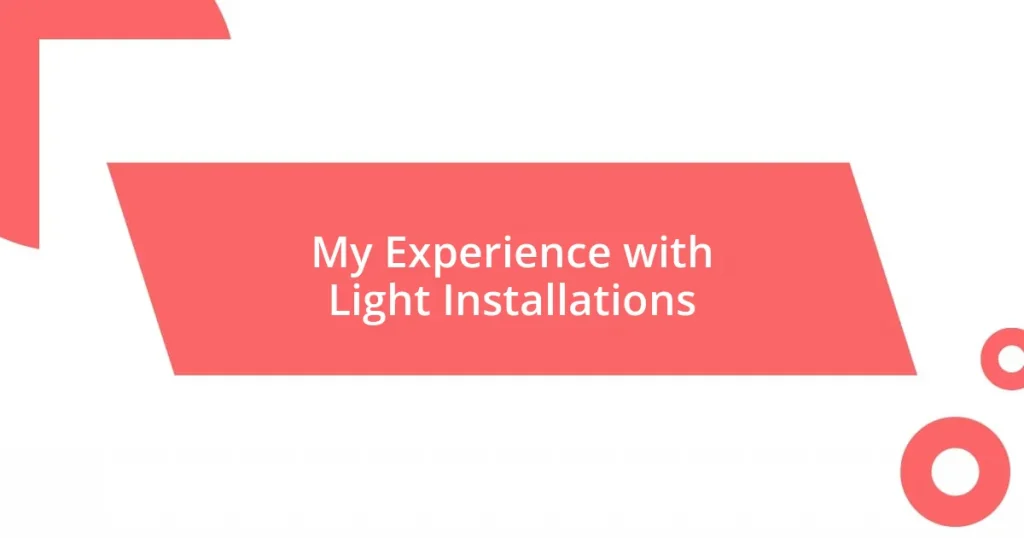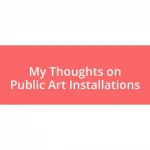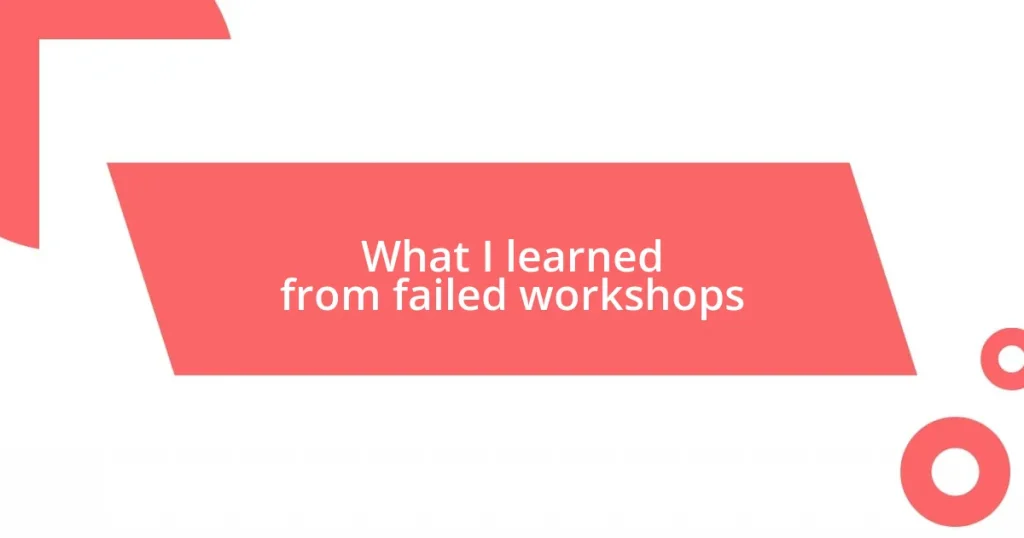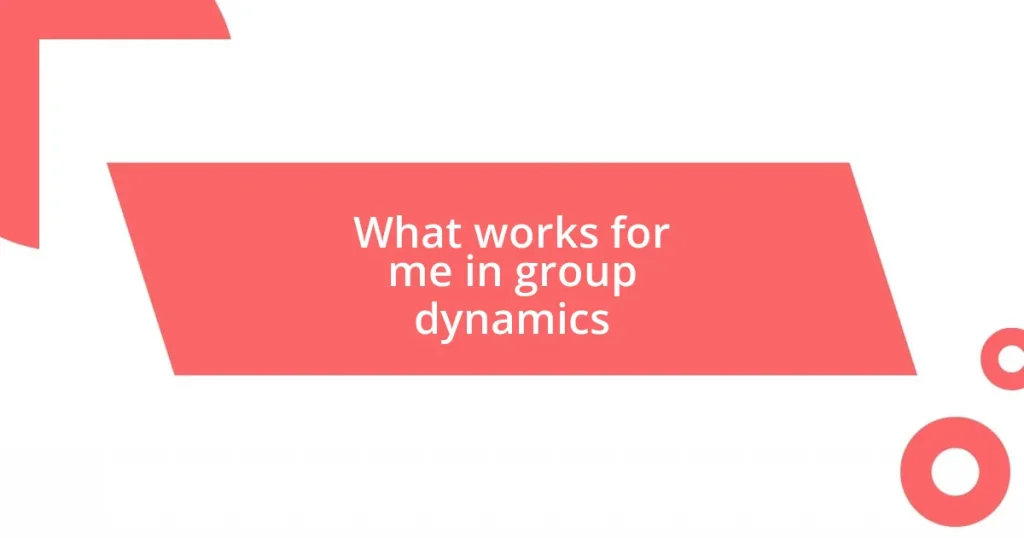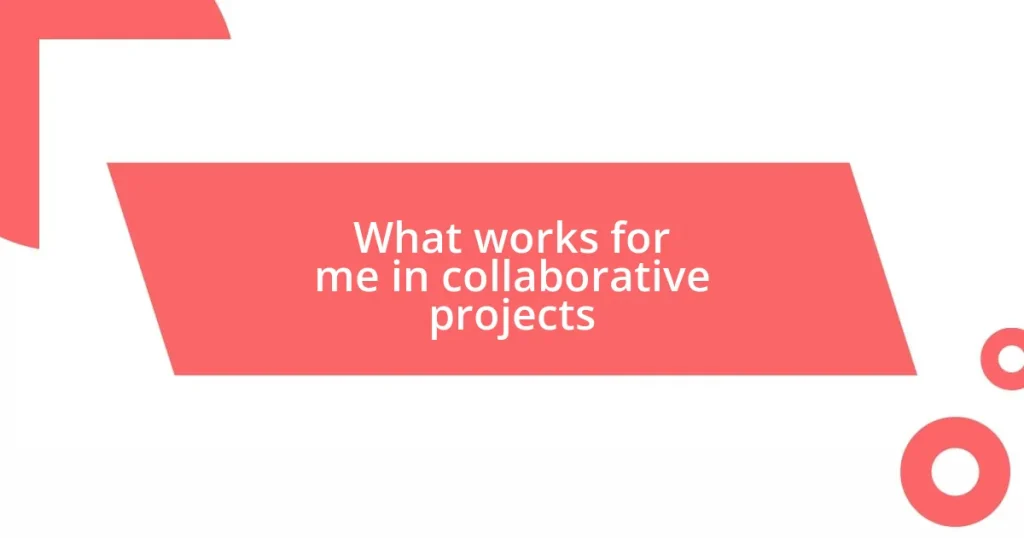Key takeaways:
- The author discovered the emotional power of light through personal experiences at community art festivals and installations, emphasizing its ability to connect people.
- Understanding color and light placement is crucial in design, as it impacts mood and enhances the atmosphere of a space.
- Quality tools are essential for effective light installations, contributing to safety, efficiency, and creativity.
- Reflecting on past projects reveals the importance of adaptability and feedback in improving future designs and achieving the desired emotional impact.
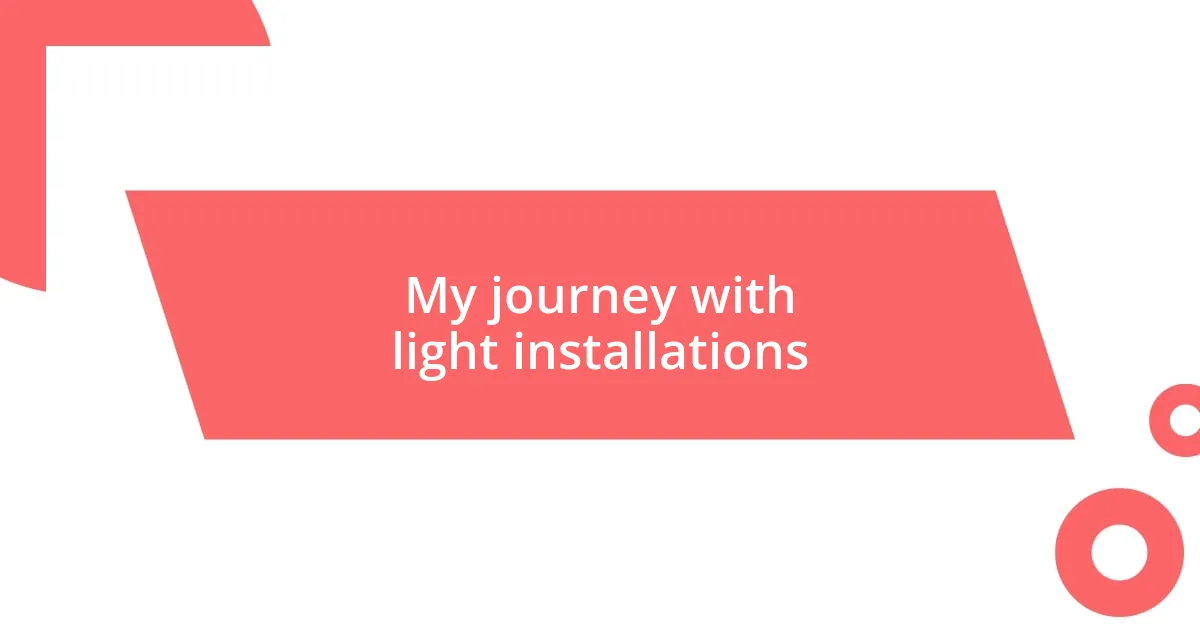
My journey with light installations
My journey with light installations began quite unexpectedly during a community art festival. I remember standing in front of a stunning display that transformed an ordinary park into a vibrant, glowing wonderland. It made me wonder, how can something as simple as light evoke such profound emotions?
As I delved deeper, I decided to create my own installation for a local exhibition. I spent long nights experimenting with different colors and patterns, fueled by excitement and a bit of anxiety. The moment I saw people’s reactions—faces lighting up with joy—it reinforced my belief in the power of light to connect us, almost like it creates shared memories in a room.
Over time, I learned that the magic of light isn’t just in illumination; it’s in the atmosphere it creates. One of my favorite projects involved a series of lanterns hung in a garden that danced in the wind. Each flicker sparked new conversations among strangers. Could something so ethereal really bring people together? My answer is a resounding yes.
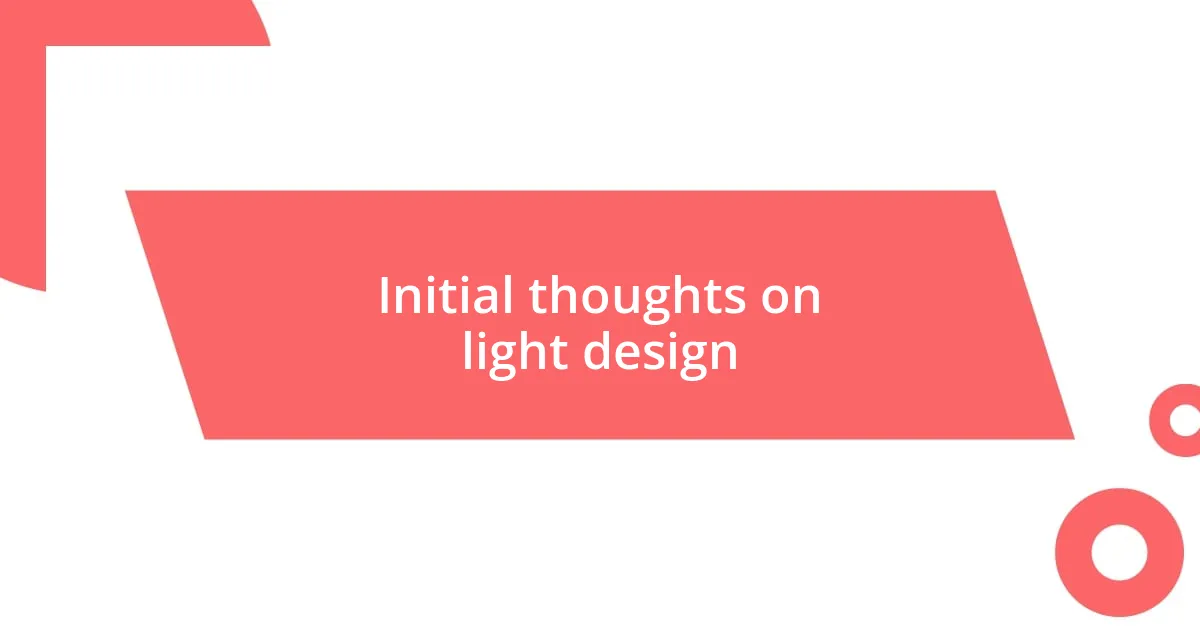
Initial thoughts on light design
When I first started thinking about light design, I was struck by how it can transform a space beyond mere functionality. I recall an outdoor event where softly glowing string lights created an inviting atmosphere, turning an otherwise mundane backyard into a cozy gathering spot. This experience made me realize that light isn’t just about visibility; it can influence mood, spark joy, and even evoke nostalgia.
As I experimented with different light sources, I quickly learned that color plays a crucial role in design. For instance, warm tones like yellows and oranges can bring comfort and intimacy, whereas cooler colors like blues and greens can create tranquility. I remember using blue LED lights for a small art piece—while it looked beautiful, the overall feel was unexpectedly serene yet slightly melancholic. It taught me how essential it is to consider the emotional response we want to elicit through design choices.
One fascinating aspect of light design is how it encourages interaction. During one of my installations, I embedded motion sensors that changed the light’s intensity as people walked by. Witnessing the laughter and engagement it fostered reminded me of how we, as creators, have the power to bring people together. Is there anything more rewarding than witnessing this connection? In my opinion, it’s the heart of what light design can achieve.
| Aspect | Effect |
|---|---|
| Color | Influences mood |
| Source | Illuminates space |
| Interactivity | Fosters engagement |
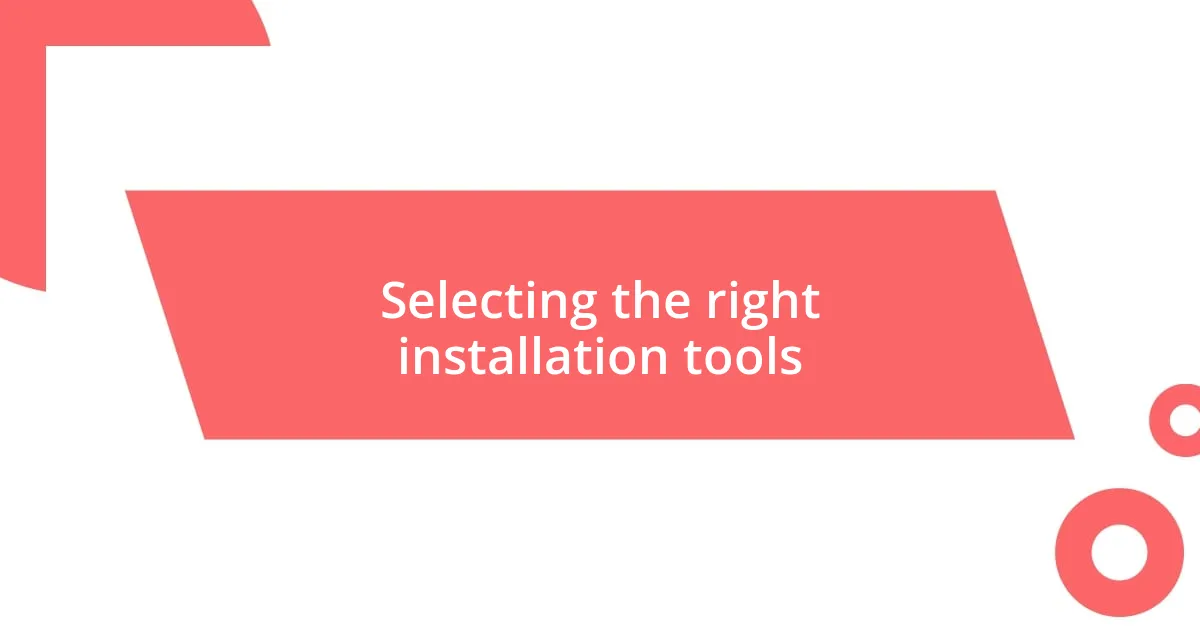
Selecting the right installation tools
Selecting the right tools for light installations is crucial, and I learned this firsthand when I was piecing together my first project. I remember shopping for tools and feeling overwhelmed by the options. It was during this search that I realized the importance of investing in quality instruments that make the process smoother and safer. The right tools not only enhance efficiency but also allow for creativity to flourish without the worry of technical difficulties.
Here are some essential tools I found invaluable for light installations:
- Wire Cutters: For precision when trimming electrical wires.
- Screwdrivers: Both flat and Phillips head for securing fixtures and fittings.
- Ladder: Essential for reaching high places; safety should always come first.
- Voltage Tester: Ensures that the electrical connections are safe and working properly.
- Heat Shrink Tubing: Ideal for protecting connections and prolonging the life of the installation.
By arming myself with these tools, I felt more confident tackling each phase of the project, transforming what could have been stressful into an enjoyable artistic experience.
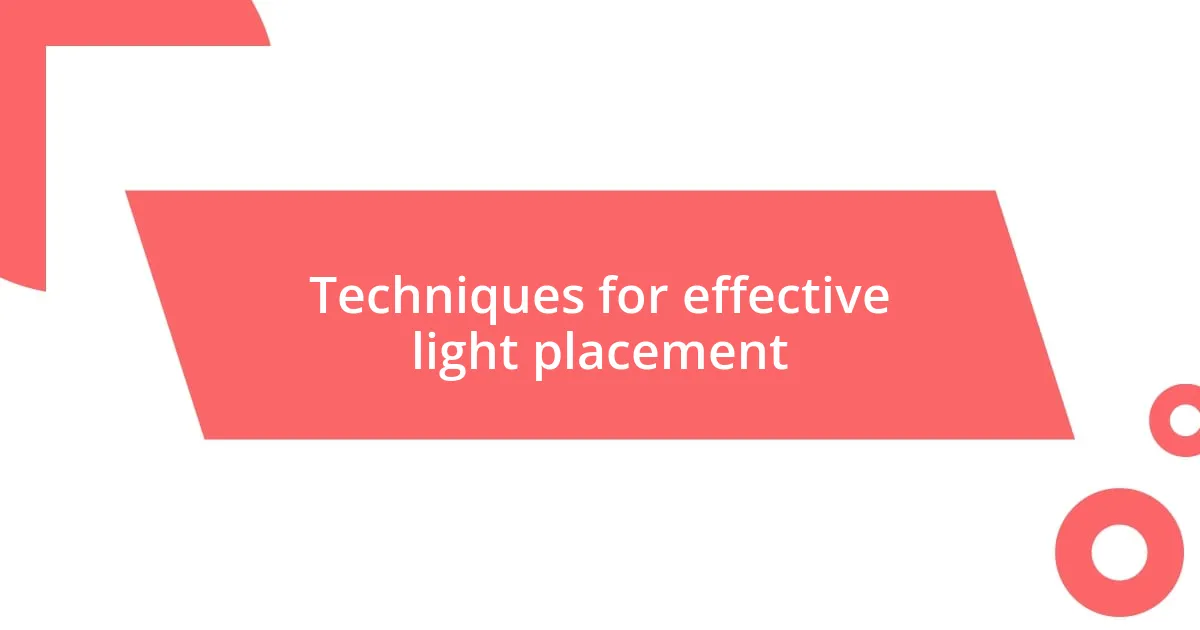
Techniques for effective light placement
When it comes to effective light placement, understanding the space is key. For instance, during one of my installations in a small gallery, I quickly realized that strategic placement of uplights along the walls enhanced the artwork’s depth. Have you ever noticed how shadows can add intrigue? I found that highlighting specific features not only draws the eye but also creates a sense of dimension—turning a flat room into a vivid experience.
Experimentation is another technique I swear by. I remember setting up a series of pendant lights at different heights above a kitchen island. At first, I worried it might look chaotic, yet it ended up being a conversation starter. People loved the playful variation, and it illuminated the space in an inviting manner. So, when placing light sources, why not think outside the box? Play with height and angles to find what resonates best with the atmosphere you want to create.
Lastly, don’t underestimate the power of layering. For my cozy reading nook, I employed a mix of ambient, task, and accent lighting. I remember the moment I added a softer table lamp alongside wall sconces; it shifted everything. Suddenly, the spot felt inviting and warm, perfect for curling up with a good book. Layering lights not only adds functionality but crafts a multi-dimensional quality that enhances the overall ambiance. Have you found your perfect lighting mix? It’s worth exploring!
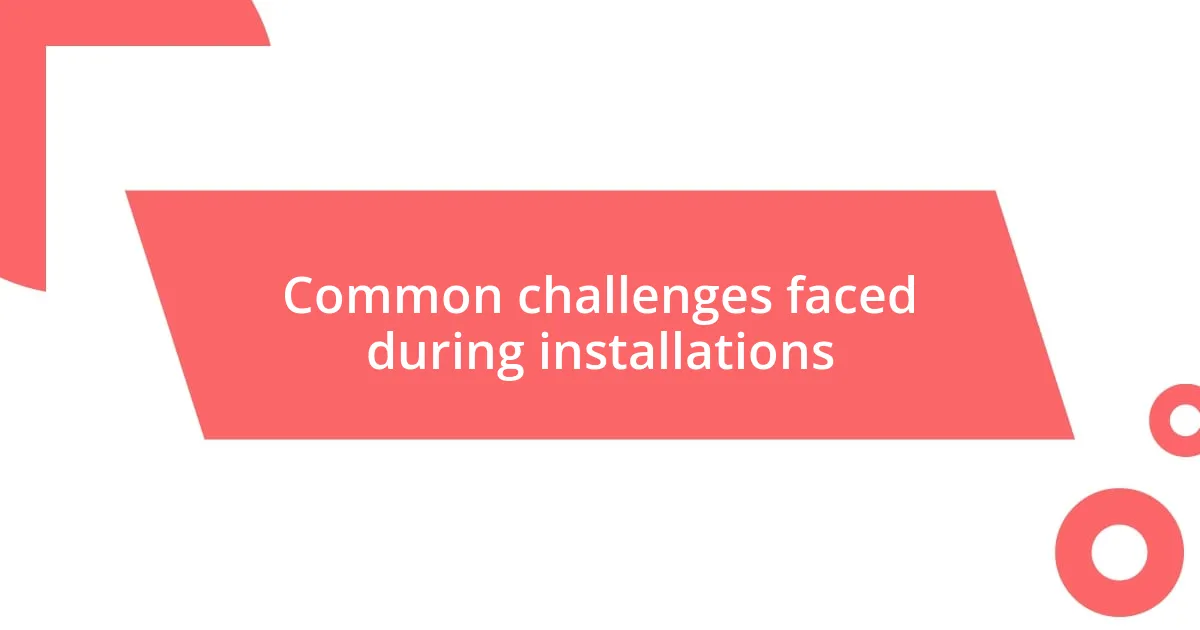
Common challenges faced during installations
One significant challenge I often face during light installations is managing power accessibility. During one of my earlier projects, I vividly remember discovering that the existing outlets were either too far or hidden behind furniture. It was frustrating to realize that access points could hinder my creative vision. Have you ever grappled with not having enough outlets? This experience taught me the importance of planning ahead and considering the layout to avoid such pitfalls.
Another issue I’ve encountered involves working with different ceiling heights. I recall installing fixtures in a room with varying ceiling heights and feeling the pressure to maintain a consistent aesthetic. It was challenging to find the right balance, especially when certain fixtures looked awkward in elevated spots. I soon recognized the value of choosing adjustable fixtures. Have you experienced similar frustrations? Being adaptable can make a world of difference in achieving your desired look.
Lastly, unexpected weather conditions can throw a wrench into outdoor light installations. I’ll never forget the day I set up beautiful string lights for an outdoor event, only to be greeted by an unexpected downpour. It was a tough moment, but I quickly learned the importance of weather-resistant fixtures and planning for contingencies. Have you ever had to improvise on the fly? Those experiences not only test your skills but also sharpen your problem-solving abilities, reinforcing that preparation is key to success.
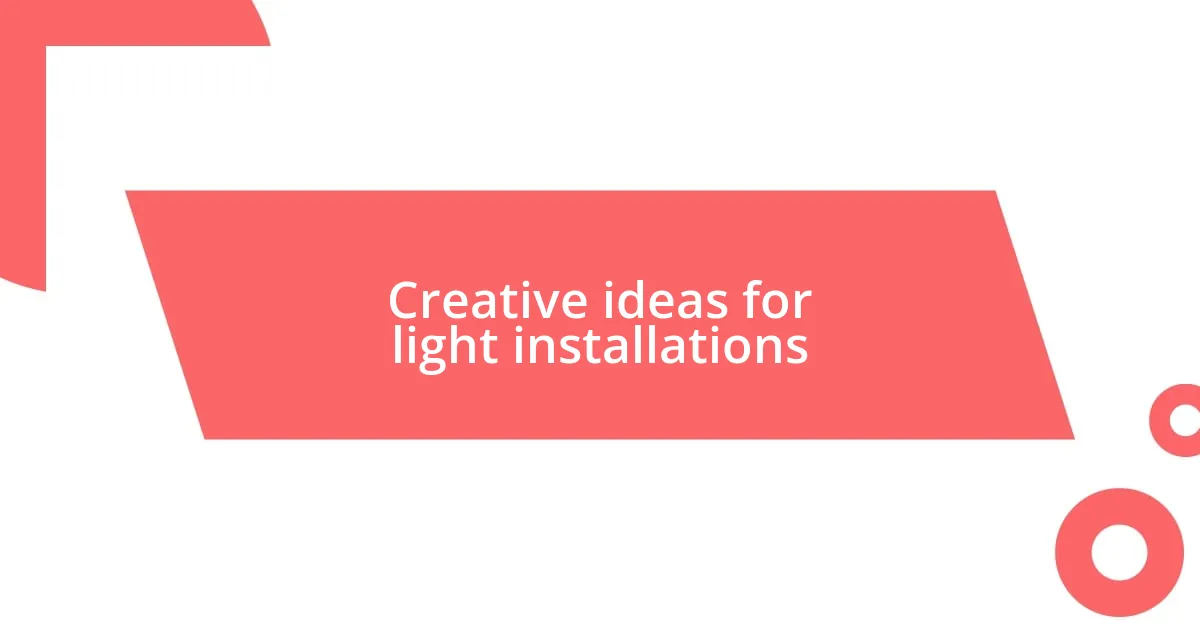
Creative ideas for light installations
When I think about creative lighting, I often remember a charming outdoor wedding I helped design. We draped fairy lights across the trees, creating a magical canopy that twinkled just like stars. It added an ethereal vibe to the night, transforming a simple garden into a romantic getaway. Have you ever felt that rush of excitement when your lighting sets just the right mood? It’s one of those unforgettable moments that show how much impact lighting can have on an experience.
Another idea that excites me is using color-changing LED strips. During a recent project, I applied them under kitchen cabinets. Not only did they enhance the space visually, but the ability to change colors based on our mood was a game-changer. I remember hosting a dinner party and how the warm whites transformed into vibrant purples, sparking a fun conversation about everyone’s favorite colors. Who wouldn’t love a little versatility in their lighting?
Lastly, I can’t get enough of incorporating natural elements with light. On a project in a rustic cabin, I combined lanterns with wooden candle holders and accent lights that mimicked fireflies. The warmth of the wood, coupled with the soft glow of the lights, felt almost like nature itself. It reminded me how important it is to blend different textures and materials to create a unique ambiance. How do you envision nature and light coming together in your space? It’s a beautiful exploration worth considering!
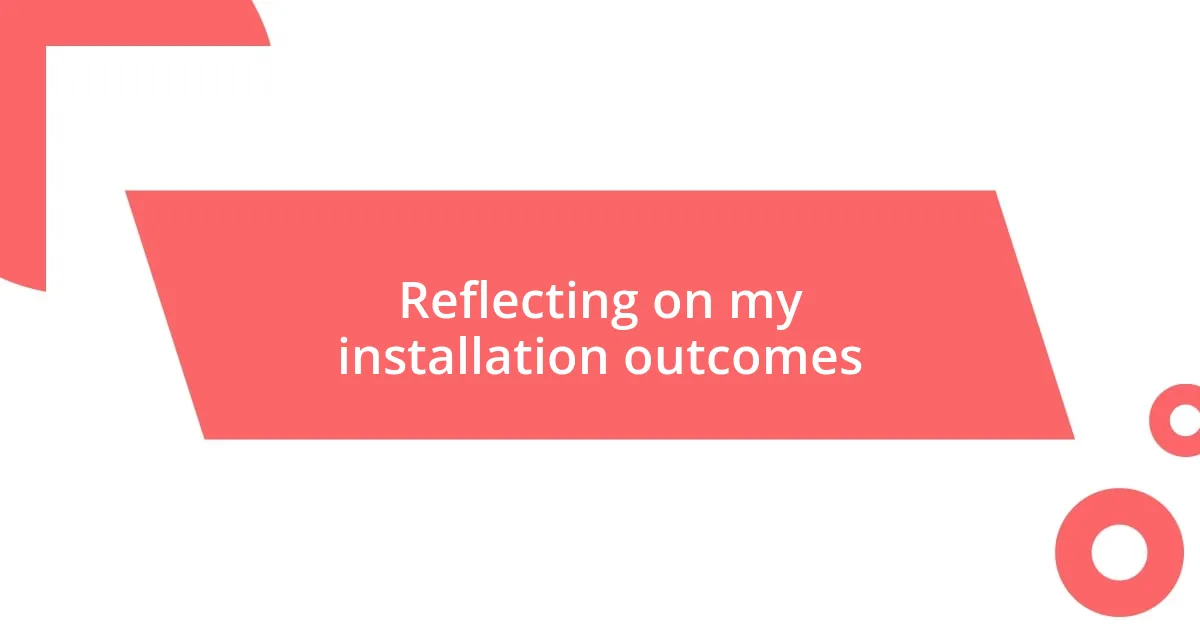
Reflecting on my installation outcomes
Reflecting on the outcomes of my light installations has truly been a mixed bag of emotions. One particular project stands out in my mind—an industrial-style loft where I installed pendant lights. The excitement of seeing the final look was palpable, yet I couldn’t shake the feeling that the placement was too far apart, diluting the impact. Have you ever felt that bittersweet sensation of seeing a vision come to life but also wishing you had done something differently? It’s moments like these that reinforce the idea that learning doesn’t stop; each outcome offers its own lessons.
In revisiting my projects, I’ve been increasingly aware of how the right lighting can completely change a space’s vibe. I once illuminated a small home office, and the glow from the desk lamp made the space feel so much cozier. That simple transformation was exhilarating—just a shift in light can evoke creativity and productivity. Can you remember a time when lighting shifted your mood in a room? These experiences remind me that light is not just about visibility; it’s about evoking feelings and setting the tone.
Moreover, I’ve started to appreciate the role of feedback in improving my installations. After a family gathering where I showcased a new outdoor setup, I received compliments, but more intriguingly, constructive criticism. Someone then suggested adding dimmers to the string lights for more control over the ambiance. At first, I felt defensive, but soon realized that every suggestion is an opportunity for growth. Have you ever felt the impact of feedback? The resulting enhancement from that insight not only elevated my design but also deepened my understanding of what clients truly value.










